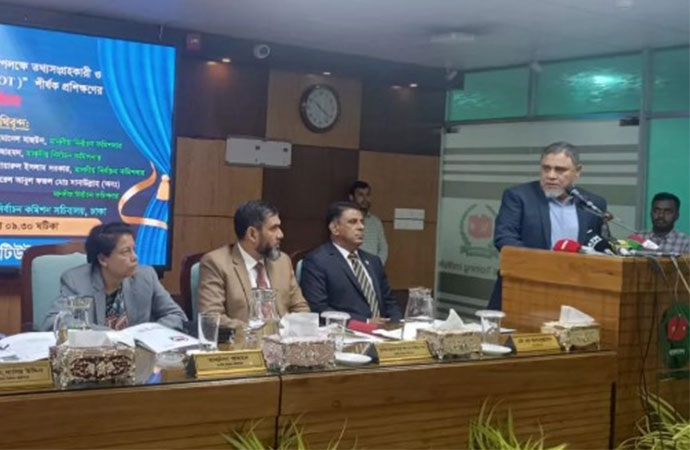Column

There is a magical quality which lies embedded in the rains of Bengal. Throughout the course of history, the monsoons, the rains, the rising rivers, the cloudbursts and thunder have all resonated with the very idea of life and its attendant dreams and despair in this part of the world. Whether it is today's Bangladesh or the single, unified Bengal of old, you will have cause to discover the truth of how immensely the rains have contributed to the making of culture and heritage in South Asia.
Asharh songs
Indeed, it is in the rains that Bengalis have consistently discovered and rediscovered themselves. Proof of this truism, assuming you are in need of it, comes from the poetry of Rabindranath Tagore, who loses little opportunity to extol the virtues of the monsoon and thereby represent them as an authentic force for natural change in the Bengali clime. There is an immensity of poetry on the month of Asharh --- 'abar eshechhe asharh akash chheye' and 'esho neepobone chhayabeethi tole' are what come to mind.
There are also plenty of paeans to the rains from Kazi Nazrul Islam and poets coming down to contemporary times. In a very powerful way, rain stands out as a powerful symbol of human emotion in Bengali life. Tears in the eyes of the beloved are almost always observed in juxtaposition with the rains, with eventually a point being reached where the tears and the rains mesh into one another. The misty-eyed looks in a woman are a reflection, from such a point of view, of the rain-bearing clouds threatening to burst into showers.
Worship, of a kind
Deep religiosity, and that is the way you can refer to the subject best, has generally been attached to the rains. Borshaboron, or welcoming the rains, has been a traditional approach to the monsoons. Farmers have waited for them, for that is the time when they can plant new crops and seedlings in the bosom of the earth. A ubiquity of rain has, till recently, meant flooded rice or jute fields peopled with varieties of fish.
As recently as twenty years ago, it was not uncommon to spot children and adults in Bangladesh's villages gathering in the fields and around streams to pick up handfuls of fish brought in by the spate of rainwater. Of course, as many would say, the use of pesticides and other such products in the interest of more agricultural productivity has lately stemmed the arrival of fish in the fields and the streams, indeed around the rural homestead. So what you may have today is a collection of memories of how the rains used to be in times gone by.
Falling to earth
But that is not to say that the rains have lost meaning. They have not, judging by the good cheer and happiness which explode once the months of Asharh and Sravana are upon us. It is a time when the land takes on a picturesque look, when an entire country goes mellow. Bangladesh, never short of nature and all it throws up in excitement, is in the rainy season home to such fruits as jackfruits, mangoes and pineapples.
In the rains, mangoes, ripe or otherwise, free themselves of the branches they have been linked to and drop to earth, as it were. It is then time for children to shoot forth in various directions as they try collecting as many of the fallen fruits as they can. There is an endless stream of perfume emanating from the growth on the fruit trees, all the way through villages and not coming to a stop until some of the fruits make their way to the urban markets of the cities.
Songs of rain
There has been a broad, persistent celebration of rain in music. Whether it is a song in a movie or melody in the modern sense of the meaning, the rains have always had pride of place. Haimanti Shukla's ogo brishti amar chokher pata dhuyo na remains one of those quintessential songs that reverberate in the soul, particularly in the monsoon season. Hemonto Mukherjee had his own repertoire of rain-defined music. Listen to such songs as tapur tupur brishti pore and you will know. In the song, Koto din pore ele, the line akashe brishti ashuk gachhera uthuk kenpe jhore gives a large degree of immortality to the rains. In Bangladesh, Runa Laila's onek brishti jhore tumi ele has for close to three decades been sung by lovers of song and poetry. And, of course, Satinath's hai borosha amon phagun kerhe niyona has forever been symbolic of high romance.
There are scores of examples one can stumble upon in music where the appeal of rain is concerned. In some other areas of Bengali culture too the place of rain has been clearly demarcated. Elders have over the ages lulled children into believing that when there is an interplay of rain and sunshine, it is time for the fox to go get married. There is thus a folktale quality that comes to the rains in Bangladesh. That and the metaphysical quality brought to rain by Tagore --- bojre tomar baaje banshi --- have added substance, hugely, to the monsoon. Romance has been made electric by rain.
Love in the rain
Lovers, in the past and in these times, have discovered in the rains the perfect opportunity for an enhancement of passion. In the villages, they have sat under huge trees, away from the rest of humanity, and focused on the music welling up from deep inside their hearts. In the towns and cities, couples have taken advantage of rain to travel through the wide roads and narrow alleys on rickshaws, sheltered by curtains, all the while convincing themselves that they have thus reinforced their feelings of togetherness.
There is, whichever way you look at it, that certain touch of magic about the rains. And the magic reflects itself through the music that comes into play every time the theme develops around the rains. The sight of old men traversing the mud paths in the villages, umbrellas securely over their heads, has been a fixture for ages. And with that comes the spectacle of children, all little boys naked in their innocence, playing around in the rainwater before plunging into the nearby pond.
Rains and eating habits
In the rains, a certain gastronomic quality has come into the character of people. The typically Bengali mixture of rice and pulses, known as khichuri or, as an English language dictionary would put it, kedgeree, sends out a distinctive aroma from homes all over the country. Khichuri, often with a dash of fish or meat and sometimes with dry fish or shutki, is a staple hardly any Bengali can stay away from.
Rain on the roof
There is the timeless about the rains in Bangladesh, in fact in the whole of Bengal. For those who have grown to adulthood in company with the rains, memories of thunder and lightning giving way to rain beating down on roofs of corrugated sheets have remained. There are other memories as well. Boatmen on the river, caught in a downpour, have sung songs that are today an integral component of Bengali culture. Hum any tune, bhawaiya or the like. You will have reason to see that the mystical quality defining that song has much to do with the rains. The rise in the level of the river, the frenzied movement of the waves, the hilsa fish in the Padma, are all the basis of a tale the Bengali has written over and over again for himself.
In the rains, then, are wrapped all the stories that have underpinned the cultural foundations of the Bengali people. Literature, language, customs, mores and everyday behaviour are all dependent on their arrival and forceful presence.

























Leave a Comment
Recent Posts
Showcasing tradition, creative ...
With a commitment to reviving traditional crafts and fostering creativ ...
Gallery Cosmos hosts special s ...
Celebrating a vibrant winter evening of cinematic art and storytelling ...
Logic of interdependence, mutual benefit to keep gui ..
The most important deliverable on the IG’s plate
All 64 people aboard an American Airlines jet were k ..
Tensions between Dhaka University and its seven affi ..